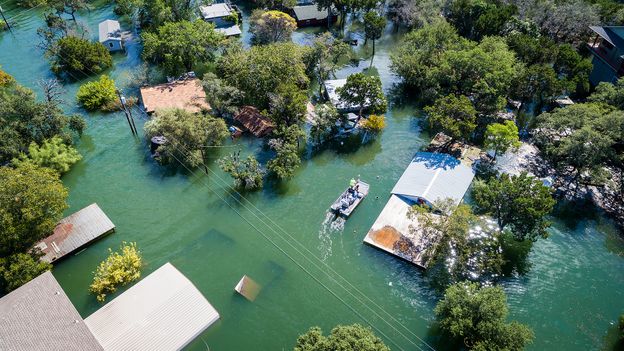- The Water Hole
- Posts
- MELONS MAKE ME INNOVATE
MELONS MAKE ME INNOVATE
Building better things and biking
The summer rush is among us and I am feeling the grind! There are so many things to do, people to see and adventures to be had now that warmth welcomes us into the outdoors (more so than before). So this week we will keep it short and sweet. Bikes, wifi, the global force that is our love of industry, and watermelon welcome you this week.

girlypops summer
Rivers and Roads
WE ARE BIKE BOUND BABY! The big news of the week is that we found some bikes on Facebook marketplace that met our criteria of being working hand-me-down bikes that are not a temptation to be stolen from the back of our car. They are nothing glorious, but they move us from point A to point B when we do the whole pedaling thing. That’s all we can ask for.

The cold winter made me forget for a moment how much fun it is to transport myself under my own human power all exposed to the elements. But since my new bike ownership, I have biked around Lake Tahoe, biked to a brewery, biked to the bank, biked to play pickleball, and biked to a restaurant. Cars can suck it (I say as my whole livelihood is currently tied tightly to driving a car around).
We have been absolutely blessed with incredible hospitality the last few weeks while visiting friends in Bend, San Francisco, and Reno. Each spot had “I could live here” vibes, but for very different reasons. Bend is the smaller hippie adventure town with great access to trail systems and everyone has a dog. San Francisco is the hustler’s dream where there are options in every category (food, recreation, jobs), seasons don’t exist and it is just inexplicably nice all the time. Reno is the wild west casino town turned outdoor hub and gateway to the Sierra Mountains, Lake Tahoe, or the desert—you choose. We will have a hard time doing so.

Tahoe Blues
Things You Didn’t Notice
I SPY WIFI
We have been working off of Starlink this past week. The bougie tech van-lifers connection to the wider world, this satellite-based brainchild of Elon Musk is prohibitively expensive. But in places that do not have internet, it is often the best option.
I didn’t realize how many people do not have internet access. 42 million Americans. The effects of internet access (or lack thereof) are cascading regarding the technology people can use, the jobs they can get, the education they have access to, and the connections they build with the wider world. Much like the houseless cycle of not being able to get a job because you need a permanent address to get an official identification card to get a job, the next evolution perils of not having good connectivity can limit the type of work one can do or even begin to apply for.
I have largely forgotten how to operate without internet or cellular data access. There used to be a time when I memorized phone numbers so that I could knock on a stranger’s door and ask to call my mom in an emergency. I made a whole presentation pitch to my father about why getting a smartphone would make everyone’s lives easier. And eventually, I was connected. Plugged in. And that was just the norm. But though my life is easier now with wifi, some weaknesses have crept in. I default to looking up things rather than committing them to memory—directions, names, facts, and song lyrics. I have more worldly concerns and fears because I know what is happening far away.
I think about what my life would be like without internet access. It would be different, sure, but not necessarily worse if there was no internet. But here’s the thing—my life is better with internet access because so many other people have it, use it, and demand it. To work, I need wifi. The inequity of wifi access perpetuates inequality because the internet is power, just as knowledge is power. As more web-dependent jobs are being created while offline jobs are getting replaced by robots, the internet is shifting into a need, not a luxury.
Don’t forget who has access, and who is still in need…

I much prefer talking to people in person
Hot Topic
BUILD IT BETTER
Industry, Innovation & Infrastructure is the 9th Sustainable Development Goal, but how do we actually “build resilient infrastructure, promote inclusive and sustainable industrialization and foster innovation” without compromising the other earthly systems we rely on? Those are some nice words—resilient, inclusive, sustainable—but sometimes it feels like we throw those out like candy at a Memorial Day parade without thinking about what they mean and how we follow through enforcing them.
We are really good at building new things, fast and cheap. But to be resilient, inclusive, and sustainable, we must think further into the future. Take a house for example. Even though the basic concept of a barrier from the outside elements has not changed, the makings of a house have evolved. We have hundreds of new materials that we incorporate into our building structures, plastics being a big one. We have smart devices and electric grids providing power and connection. We have an improved understanding of structural engineering that has allowed us to build in places we never dreamed of. All this new technology and houses are still burning in fires, or getting washed out by floods. We invest our life savings into them hoping they will be a good investment. But often we don’t have a good grasp on all the risks.
The entity whose whole business is to know risk is the insurance company. It is in insurance companies’ best interest to predict the future as clearly as possible. Yet as the climate warms at an unprecedented pace, the risks that people face are going to change more rapidly and it is hard for even insurance companies to keep up.
If we keep moving so fast that even insurance companies can’t keep up, we might need to rethink where and how we are innovating.
The way we can achieve SDG #9 is to innovate in ways that help us predict the future better (by gaining a better understanding of how the natural world works), and then with that knowledge craft the tools to make our ideal future a reality. It does us a disservice to hide our mistakes. We have to be open to change, especially in the areas where one small innovation led to overcommitting to it (i.e. plastics/oil, automobiles, McMansions, nitrogen fertilizer). Goldilocks didn’t get it right on the first try, but she also didn’t keep eating the porridge that was too hot even though it was porridge! She tried again, and again, got more information, and found something that was just right. Our challenge is to adjust our industry, innovation, and infrastructure till it is just right.

And trim our production that is out of balance
Refresh
Health: Shocker. Good health is good for business. Though there are so many businesses that rely on sick people (think pharmaceutical companies), businesses can also be a powerful lever to promote the health of their employees. It pays off.
Household: So what if my homeowner’s insurance is going up because of climate change? Does that mean I have to move to Ohio? Some states are taking measures, but the first step is to know what danger you are in.
Transportation: How we move around is one of our favorite areas of innovation. But if it is anything like the ultra bright LED headlights that shine for miles ahead but also momentarily blind me when I am moving in the opposite direction at 65 MPH, there will be some hurdles to overcome. Here’s where our innovation is headed. (This will also be greatly affected by whether an electric vehicle hater or a technology embracer becomes president).
Mentality: Since many of the pitfall of our technological innovations have been because we didn’t adequately measure all the consequences, it can be challenging to come up with completely sustainable ideas. Here are some tools for honing in those ideas.
Community: There’s nothing like a brief review of population and the environment to equip you with some captivating weekend conversation starters.
Mouthwatering
JUST WATERMELON, BUT FROZEN
If you have not had shaved frozen watermelon, I am so sorry, you have been living a life without one of the most joyful summer treats in existence.
I was too… until two days ago.
My world is changed.
Step 1. Slice watermelon.
Step 2. Freeze slices.
Step 3. Shave the frozen watermelon when ready to devour.
Step 4. Add toppings like lime juice, ginger, or salt. Or get creative.
Step 5. Actually devour.
You’re welcome.
Game Time
It’s finally time for lawn games. With the meteoric rise of spike ball came all the other ball-oriented lawn game substitutes, so here is our first alternative to start off your summer.

We have some work to do!
Thank you for reading this Water Hole letter. Let me know what you think! You can reach out by emailing here. We’ll be back in your inbox four Wednesdays from now (Because vacation!). In the meantime, if you enjoyed this, please consider sharing it with your friends and family using this link. If this newsletter was forwarded to you, join the Water Hole now. To ensure it reaches your inbox, just add [email protected] as a contact.


